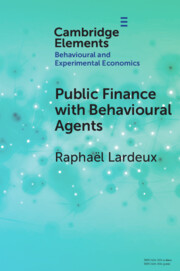Element contents
Public Finance with Behavioural Agents
Published online by Cambridge University Press: 01 December 2022
Summary
- Type
- Element
- Information
- Online ISBN: 9781009029087Publisher: Cambridge University PressPrint publication: 22 December 2022
References
- 3
- Cited by



